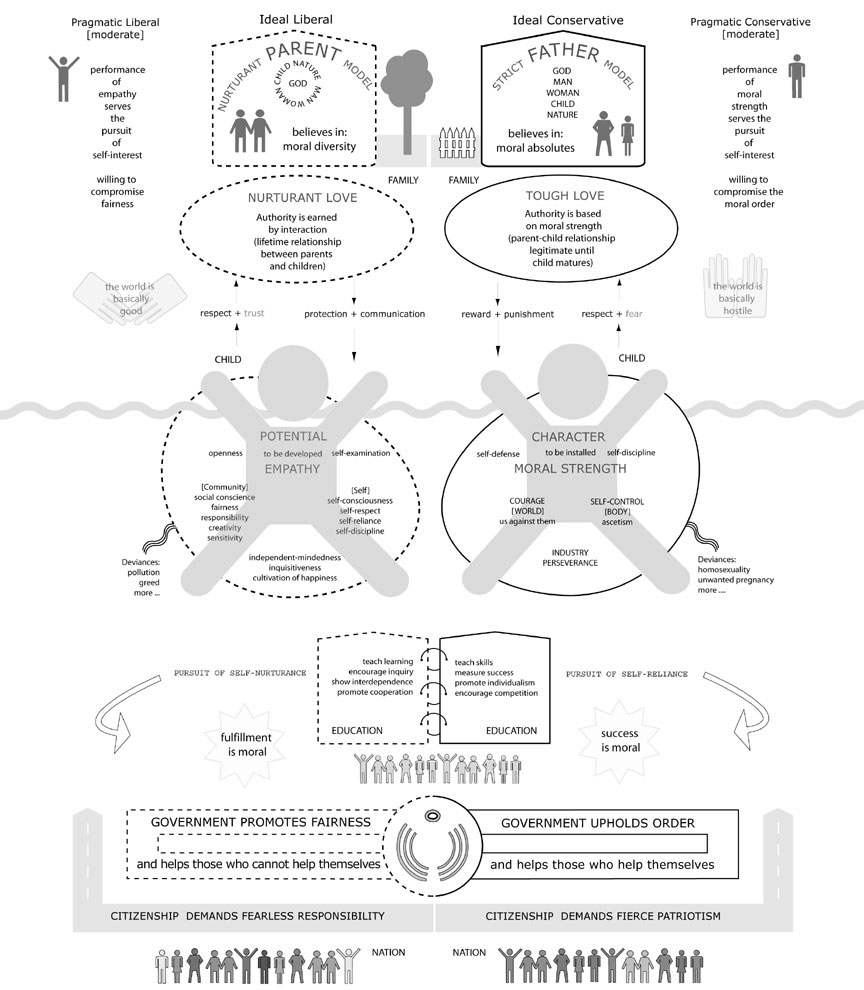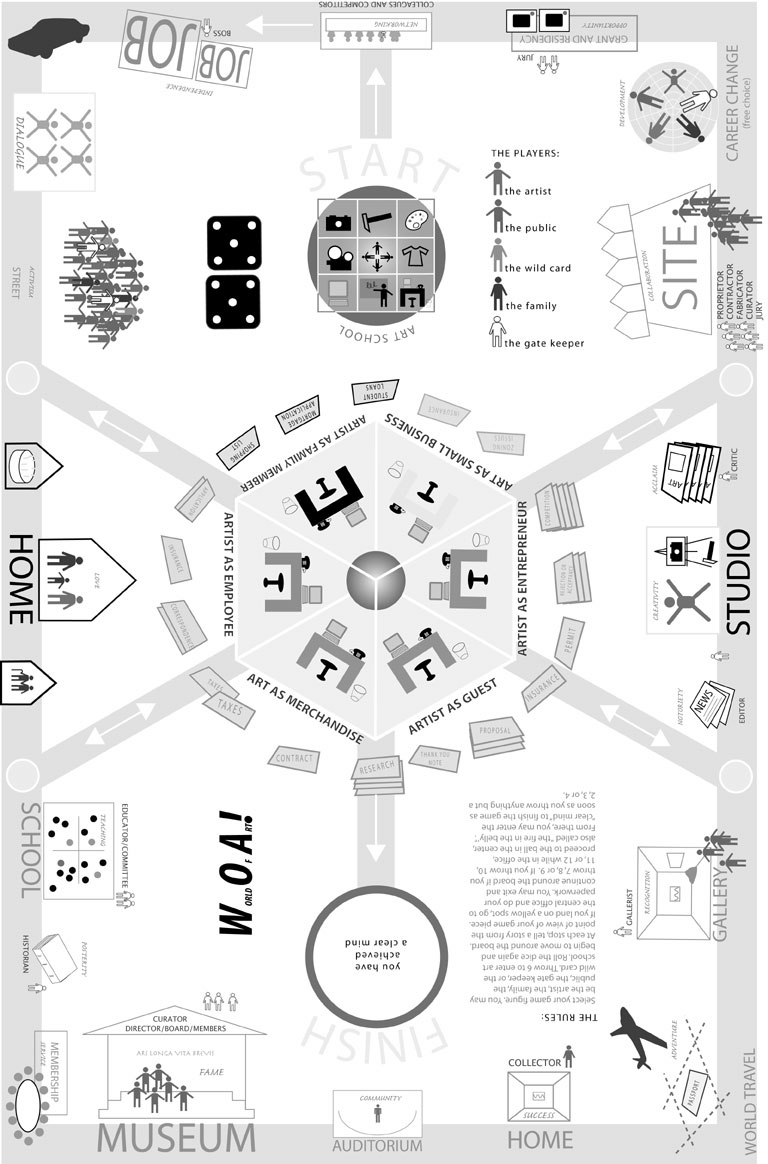
__

__
See as PDFs: [World of Art] [Moral Politics]
____
ABOUT MAKING DIAGRAMS: I diagram essays and books because this is how I make sense of the texts I read. I read these texts to help make sense of what I experience. I have all kinds of questions and seem to have a knack for finding answers in print. As a visual artist, I am intrigued by the richness of imagery that is contained in all language, popular or academic, spoken or printed. Text is never dry, it is always brimming with figures of thought, some obvious, some subtle and waiting to be extricated. I make pictures from texts. As important as the content of the diagrams is to me personally, and as excited as I am if someone shares my interests, in the end I am involved in a formal endeavor. I think that "making sense" is one of the central human activities, and that we "make sense" by comparing stories. We frequently seem to need a fresh vehicle to tell our stories through, to stay alert and engaged, and I am working out what I hope is one contemporary way of "making sense".
ABOUT "MORAL POLITICS": The series of 3 diagrams and 6 banners was created during a residency at the City of Chicago Open Studio. George Lakoff's "Moral Politics", the book the diagrams and the banners are derived from, was first published in 1996, during Clinton's presidency. The second edition was published in 2002, at the beginning of President Bush's term. It is a carefully researched, academic text, not a quickly assembled election season publication. The fact that I read it in 2004 was prompted by the politics of the day. I diagrammed the book hoping to contribute to the dialogue. Lakoff is a cognitive scientist. He studies how people conceptualize the world. "Moral Politics" addresses two fundamentally different moral systems that play out in all areas of life, thus impacting and determining politics. It seems that most people draw from both liberal and conservative belief systems to come up with their own, unique blends. Election campaigns address this moral diversity by attempting to consolidate voters' positions. I think that the ideas developed in this book have a broad applicability across social and cultural contexts. (In the diagrams, right and left are pretty neatly divided. The words paired on each of the six banners can be found in the diagrams as well, but out in the space of the gallery the associations of these words to the texts are a bit less clear. By asking visitors to select a banner to pose with for a photograph to be posted on a website, they have another opportunity to engage their own moral or political belief system, apart from an association with the notions of liberal or conservative.)
READING: George Lakoff, Moral Politics—How Liberals and Conservatives Think (University of Chicago Press, 2nd edition, 2002)
ABOUT WORLD OF ART: Curator Mary Jane Jacob had seen the diagrams after Lakoff
at the Chicago Open Studio, and commissioned me to create a poster for a workshop symposium she was organizing at the School of the Art Institute of Chicago:"Setting Up Your Art and Your Life - Strategies for a Sustained Practice". The idea was to create a diagram of an artist, not based on a book, but on my own expertise. Conjuring up elements I wished to include, it first became apparent how crowded the world of art is (artists, audiences, curators, juries, dealers, students, critics, historians etc.), then how many locations are involved, and then, in discussion with Mary Jane, it became very clear that how we value the players and the locales varies greatly as well. As the task was not to diagram my personal belief system, two design possibilities presented themselves: to indicate all possible varieties, or to make a game in which all possibilities are evoked. The game seemed to be appropriate, and it was printed on the rear of the poster that announced the symposium, as a treat of sorts. Later I also printed a larger version and made game pieces to go along with it.
![[ToC]](51_toc_off.gif)